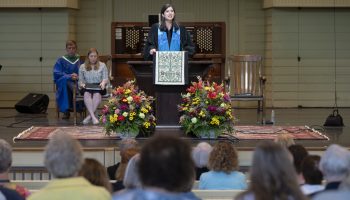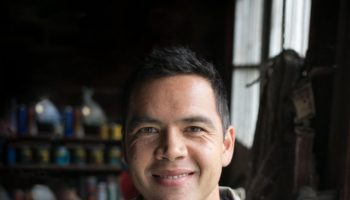MAX ZAMBRANO – STAFF WRITER
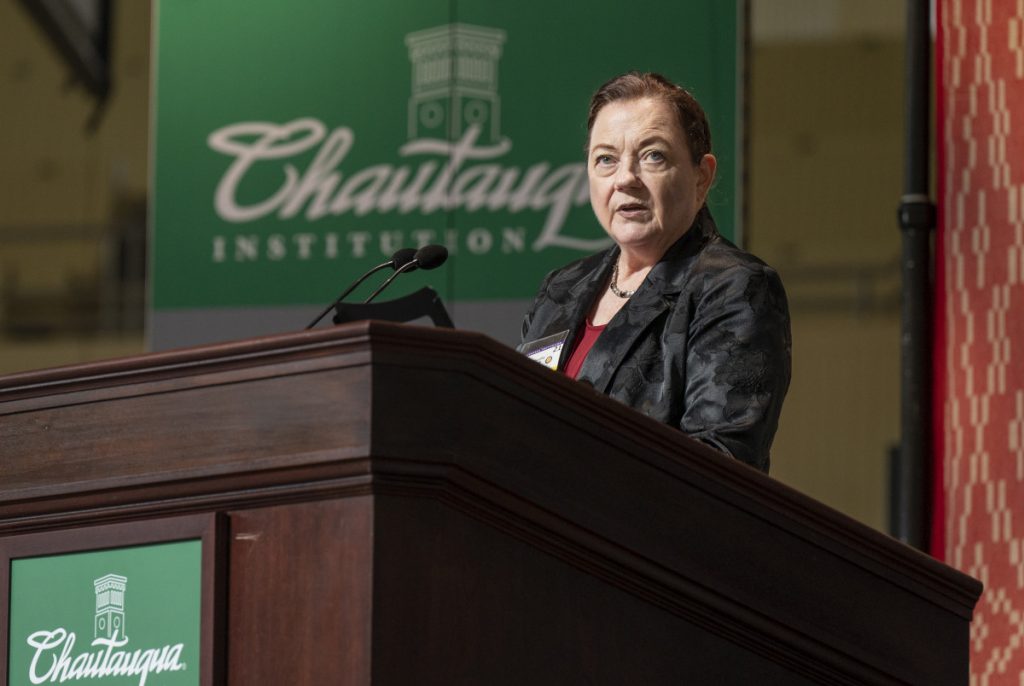
Words from different times and places can mean something entirely different, and the word “soul” varies more than most, said Nancey Murphy at the top of her Interfaith Lecture on Wednesday in the Amphitheater.
Closing Week Eight’s theme, “The Human Soul: Our Ineffable Mystery,” Murphy also opened with an edit to her title in order not to sound too self-assured, she said. She instead called her lecture “Are We Our Souls?: Multi-Aspect Monism in Christian Thought.”
Murphy, a senior professor of Christian philosophy at Fuller Theological Seminary in Pasadena, California, wanted to focus on the ideas of the soul and Spirit — this word is capitalized when Christians make a distinction of the third person of the holy trinity.
In the first section of her lecture, Murphy wanted to focus on radically different conceptual schemes, she said.
She began with philosopher Paul Feyerabend’s examination of Greek art in the Homeric period, which she said was called Archaic.
“If you’ve seen Archaic Greek or Egyptian or other ancient pottery artworks and so forth, you’re liable to see a profile with the nose sticking out to one side … but the eyes have been moved around to the side of the face,” she said.
With Homeric literature, Feyerabend summarized Greeks as having lived in a world of paratactic aggregates, which Murphy said is when the elements of such an aggregate are all given equal importance.
“There is no hierarchy,” she said. “No part is presented as benign, subordinate to or determined by others.”
A list of Homeric dialogue defined the word psuche, or soul, she said.
“It’s used to speak of what is risked in battle or what is lost in death,” she said. “This hardly fits with the description of the session of being of another dimension beyond the physical plane.”
She then turned to classic Greek scholarship, which she described as far removed from the Archaic period as possible.
“For Plato, there is another dimension or realm above this physical one, the realm of Forms,” she said, emphasizing the capitalization of Form to indicate it shouldn’t be taken in a contemporary sense. “Forms were of a much higher degree of reality than earthly things.”
Murphy described earthly things as imperfect copies of transcendent Forms, and the soul is held captive within the body.
When analyzing between the classical and Archaic worldview, she said it was important to remember to combine such ideas in the same framework, and her accounts of these two world views was too short.
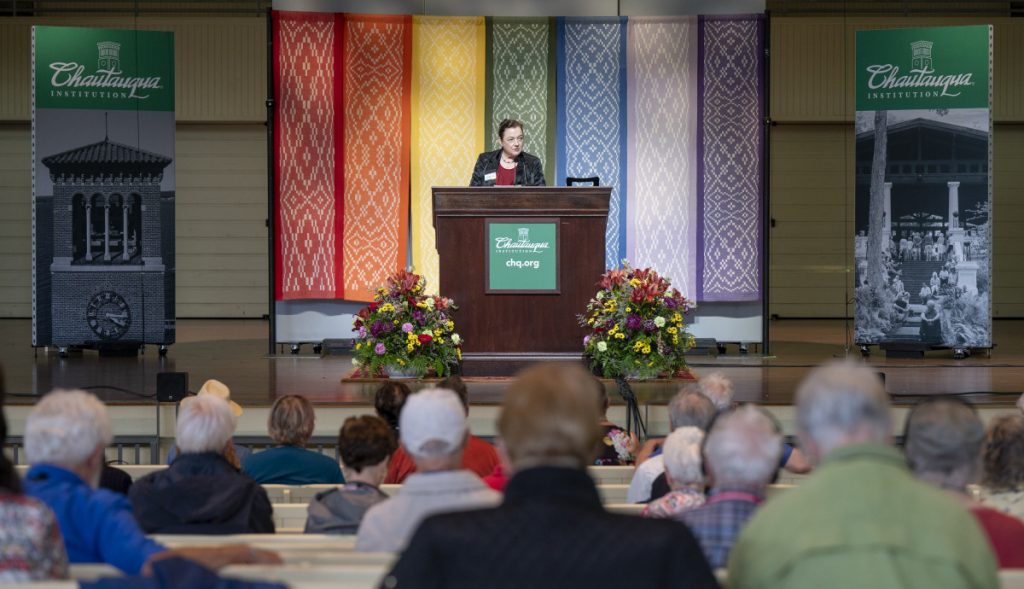
She then turned to the question: Are we souls?
“My main aim is to present an alternative to Christian theology to body-soul dualism,” she said.
Although she said new findings and neuroscience provided motivation for studying monism versus dualism, she wanted to give evidence that the Christian Bible does not teach dualism.
“Those who think Christians are only questioning dualism now because of neuroscience are unaware of the fact that the dualism physicalism issue is already more than a century old in Christian Biblical studies and church history,” she said.
The 1997 book Death of Death (Resurrection and immortality in Jewish Thought), by Neil Gillman, argues the only part of human nature which fits the Jewish understanding of life and relationship to God is a physicalist account, Murphy said.
This account is aligned with an emphasis on bodily resurrection in the afterlife, not immortality of the soul, Murphy said.
“He points out that the ancient concept of the soul was not a concept of an immaterial thing,” she said.
Nephesh, the Hebrew word for soul, is not restricted to the physical space one’s body fills, she said.
“When God is effectively speaking through a prophet, God is literally present through that prophet,” she said.
She said human souls can be similarly present in others when they are having an effect.
“I am who I am because of my relationships to others,” she said.
Until recently, Murphy believed humans were complex bodies that developed capacities over time, such as language, abstract concepts, reasoning techniques, emotion and so on.
But, the Apostle Paul notes that it is only one aspect of our being, she said.
Nearly all translations of Genesis 2:7, which Ori Soltes highlighted in Monday’s Interfaith Lecture, say that God formed man from the dust of the earth and breathed into his nostrils, and several interpretations are that God breathed in his immortal form, she said.
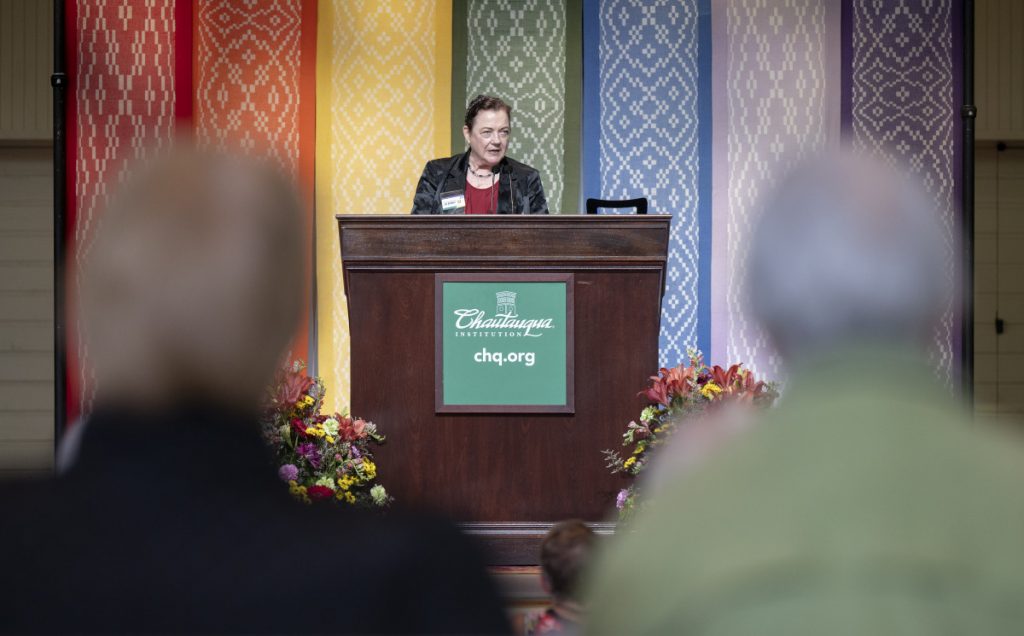
The word soma, or body, she identified as one aspect of us and that it might be better understood as an embodiment. Humans see it as a physical embodiment because our environment is physical, she said.
“What embodiment in the next eon after the resurrection is the truly ineffable issue we’re dealing with in this series,” she said.
Early Christians had two options of what happens at death, she said. The Hebrew book of Daniel made body resurrection a possibility and several centuries of Greek influences made an immortal soul leaving the body another, she said.
Murphy contended that embodiment might be whatever form fits the new character of the new eon.
“One of my favorite images of the next life is that of a wedding banquet,” she said. “We can imagine the reunion of extended families and friends conversing over a meal, but we can’t get into the biology of how the food is processed after it’s eaten.”
The accounts of the resurrected Jesus are full of inconsistencies. Paul spoke of an appearance of light and a voice, while the Gospel said Jesus was identifiable and appeared like a normal body, she said.
“I believe that a description of the resurrected person is not literally possible,” she said. “Our language is all built on and meant for describing this physical eon.”
Although what happens in another eon is indescribable, she said we can know resurrection is about moral character.
“We are not saved out of this world, but as a part of it,” she said. “That is, it leads us to expect the entire cosmos will be transformed or recreated in the same way we expect humans to be.”
Using Bruce Greyson’s Interfaith Lecture on Tuesday, Murphy wanted to see if descriptions of near-death experiences provided a glimpse of a resurrection.
One aspect was faster thinking, which she said might be a sample of the human brain working faster in a new dimension, while it works slowly in this one.
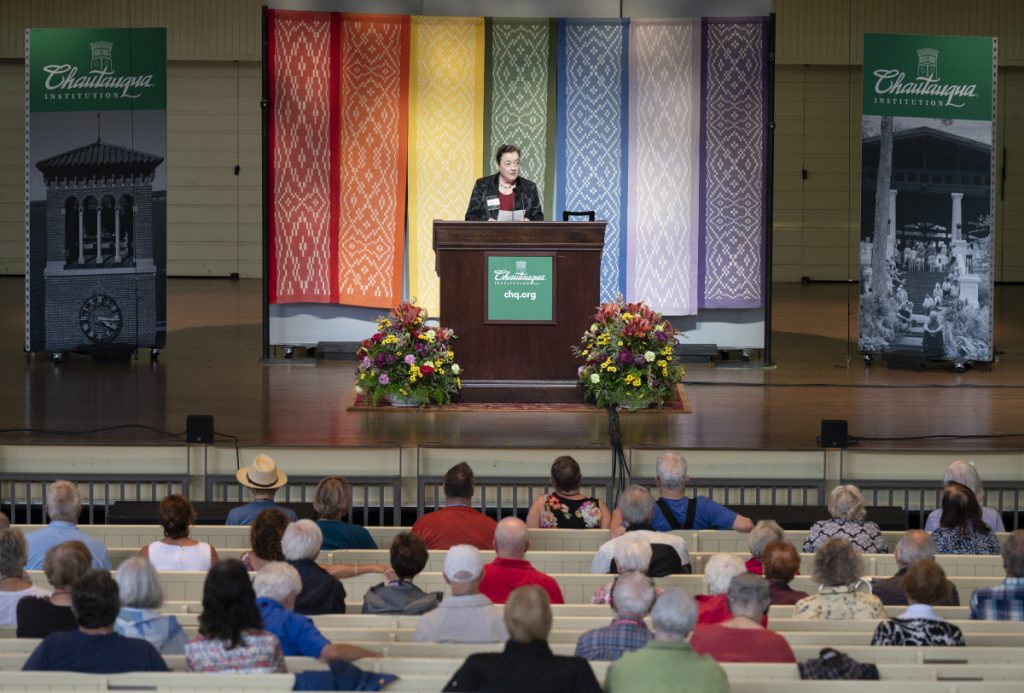
Another was a life review where one can see all the good they did in the world, she said. Perhaps one could see a good thing they did for someone led that person to do good for five more people, something they couldn’t know before death, she said.
There’s the common element of time not existing, and Murphy said earthly time can’t be coordinated with eternal or godly time.
Emotional changes regarding peace and concern for others sounds like words from the prophet Isaiah, she said.
Murphy wondered if scenes of people meeting in beautiful meadows during near-death experiences mean the whole cosmos was not transformed. Greyson did note in his lecture, though, that a problem with researching near-death experiences is people often speak in metaphors because what they saw and experienced is indescribable and are often flattened memories.
She also raised the question of a waiting period between the time each person dies and the end of the world, noting it was a highly contentious issue during the Protestant Reformation.
Martin Luther originated the idea of a soul sleep, where people would be unconscious between death and the resurrection, eliminating the idea of a cruel purgatory, she said. Calvinists and the Catholic Church discussed a conscious wakefulness between death and the general resurrection, she said.
Another tradition that Murphy aligns with is the radical reformation, or anabaptist. She said they had an aspective account of how Biblical anthropological terms would be used, sufficient arguments against the New Testament teaching body-soul dualism, and beliefs in a concept of soul sleep.
“It felt as though I had started on a journey, made my long way around, then finally came home,” she said.


